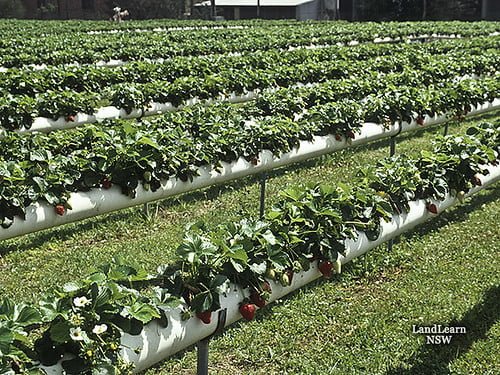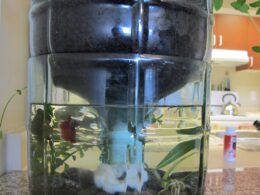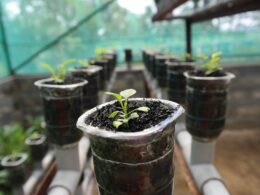Are you interested in growing plants using hydroponics, but wondering how long it takes to see results? Hydroponics is a method of growing plants without soil, using a nutrient-rich water solution instead. It has become increasingly popular in recent years due to its efficiency and ability to produce high yields in a small space.
The amount of time it takes to grow a plant using hydroponics depends on several factors, including the type of plant, the growing conditions, and the stage of growth. In general, hydroponic plants tend to grow faster than those grown in soil because they have constant access to nutrients and water.
However, it’s important to understand the various factors that affect plant growth in hydroponics and how you can optimize them to maximize your results. In this article, we will explore these factors and provide tips for growing healthy plants in hydroponics.
An Introduction to Hydroponics
If you’re interested in a unique and efficient way to cultivate plants, hydroponics may just be the solution for you. Hydroponics is a method of growing plants without soil, where the roots are instead submerged in a nutrient-rich water solution.
This type of gardening has many benefits over traditional soil-based gardening. One major benefit of hydroponics is that it allows for more efficient use of resources such as water and nutrients. With traditional soil-based gardening, much of the water and nutrients that are added to the soil can be lost due to runoff or evaporation. However, in hydroponics, the water and nutrients are delivered directly to the roots, reducing waste and increasing yield.
Another benefit of hydroponics is that it allows for year-round growing, regardless of the weather or season. With traditional soil-based gardening, plants are often limited to specific growing seasons and may be susceptible to weather-related damage. With hydroponics, plants can be grown indoors or outdoors, and with the right setup, can be grown year-round.
Hydroponics is a unique and efficient way to cultivate plants with many benefits over traditional soil-based gardening. It allows for more efficient use of resources, such as water and nutrients, and allows for year-round growing, regardless of the weather or season. With the right setup and care, you can expect to see healthy plants growing in no time.
Factors that Affect Plant Growth in Hydroponics
The growth of plants in a hydroponic system can be influenced by a variety of factors. One of the most important factors is pH balance. The pH level of the nutrient solution needs to be just right to ensure proper plant growth. If the pH level is too high or too low, it can lead to nutrient deficiencies, which can stunt plant growth or even kill the plant.
Another factor that can affect plant growth in hydroponics is the nutrient solution itself. The nutrient solution needs to contain all the essential minerals and nutrients that the plant needs to grow. If the solution is not balanced correctly, it can also lead to nutrient deficiencies. Additionally, if the solution is too strong, it can cause root burn, which can also harm the plant.
It is essential to monitor both the pH level and the nutrient solution carefully to ensure optimal plant growth. Regular testing of the nutrient solution is necessary to ensure that it is balanced correctly. By doing so, you can help ensure that your plants grow healthy and strong, providing you with a bountiful harvest.
Remember, a little bit of attention to detail goes a long way when it comes to hydroponic plant growth.
Can Leeks be Grown Hydroponically?
Growing leeks hydroponically is completely possible. Hydroponic systems offer a controlled environment that allows for optimal growth of these veggies. By providing essential nutrients directly to the plants’ roots, you can eliminate the need for soil. This method saves space and water while ensuring year-round cultivation of fresh, healthy leeks.
How Long Does it Take to Grow Plants Using Hydroponics?
Growing plants hydroponically can be a speedy process that yields impressive results. However, the growing speed of plants in hydroponics depends on several factors. One of the most important factors is the nutrient solution used. The nutrient solution used in hydroponics has important nutrients that help plants grow and develop.
Plant species and environmental factors also play essential roles in determining the growing speed of plants in hydroponics. Different plant species have different growing rates, and some plants may take longer than others to grow in hydroponics. Environmental factors such as temperature, humidity, and light conditions also affect the growing speed of plants in hydroponics.
If you want to optimize the growing speed of plants in hydroponics, you should pay attention to the nutrient solution, plant species, and environmental factors. Here are five tips to help you grow plants faster in hydroponics:
- Choose plant species that have a fast growth rate
- Maintain optimal environmental conditions such as temperature, humidity, and light
- Use a high-quality nutrient solution with the right balance of nutrients
- Monitor the pH level of the nutrient solution
- Keep the hydroponic system clean to prevent diseases and pests
By following these tips, you can grow plants quickly and effectively in hydroponics. Remember that growing speed may vary depending on the plant species and environmental factors, but with the right approach, you can achieve impressive results in no time.
Tips for Maximizing Plant Growth in Hydroponics
Get ready to maximize your plant growth in hydroponics with these helpful tips!
One of the most important factors in hydroponic plant growth is the nutrient solution. Make sure to regularly check and adjust the pH levels of the solution to ensure that the plants are receiving the proper nutrients. It’s also important to change out the solution every 2-3 weeks to prevent the build-up of salts and other harmful substances.
Another factor that can greatly affect plant growth in hydroponics is lighting techniques. Make sure to choose the right type of light for your plants and adjust the distance between the light and the plants accordingly. The duration of light exposure is also crucial for plant growth, so make sure to keep track of the hours of light your plants are receiving. It’s recommended to provide 16-18 hours of light per day during the growth stage, and 12 hours of light during the flowering stage.
By following these tips for maximizing plant growth in hydroponics, you can ensure that your plants are receiving the best possible environment for healthy and abundant growth. Remember to regularly check and adjust the nutrient solution, as well as choose the right lighting techniques for your plants. With proper care and attention, your hydroponic plants will flourish and provide you with a bountiful harvest.
Conclusion and Future Directions
You can enhance your hydroponic gardening skills by considering the insights provided in this guide and exploring new techniques to maximize yield. However, it’s important to acknowledge that there are limitations and challenges associated with hydroponics, such as the need for constant monitoring and maintenance, and potential issues with water quality and nutrient balance.
But don’t let these deter you from experimenting with hydroponics, as there are potential solutions and innovations being developed to address these challenges. One potential solution is the use of automation and technology to monitor and control the hydroponic system. This can include sensors that track water and nutrient levels, as well as software that adjusts the system based on the data collected.
Another innovation is the use of alternative growing mediums, such as coconut coir or perlite, which can provide better aeration and drainage than traditional rockwool or peat moss.
In conclusion, while there are limitations and challenges associated with hydroponics, there are also many potential solutions and innovations being developed to overcome these obstacles. By continuing to explore and experiment with new techniques and technologies, you can maximize your yield and achieve success in your hydroponic gardening endeavors. So don’t be afraid to try new things and push the boundaries of what’s possible in hydroponics.
Frequently Asked Questions
Can any plant be grown using hydroponics?
You may be wondering if any plant can be grown using hydroponics. The answer is yes, but there are some challenges.
Hydroponic farming offers many benefits, such as faster growth, higher yields, and less water usage. However, some plants require specific nutrients or growing conditions that may be difficult to replicate in a hydroponic system.
For example, plants that rely on insects for pollination may need additional steps to ensure successful pollination. Additionally, some plants may be more susceptible to disease in a hydroponic environment.
Despite these challenges, many plants can thrive in hydroponic systems with proper care and attention.
How does the cost of hydroponics compare to traditional soil-based gardening?
Comparing Costs: Hydroponics vs Soil-based Gardening
When it comes to comparing the costs of hydroponics vs soil-based gardening, there are a few factors to consider. While hydroponic systems can be more expensive to set up initially, they can also be more sustainable in the long run.
Hydroponic systems use significantly less water than traditional soil-based gardening, making them more environmentally friendly. Additionally, hydroponic systems can be set up indoors, which means that they can be grown year-round, regardless of weather conditions.
While soil-based gardening may be cheaper to set up initially, the ongoing costs of soil, fertilizer, and water can add up over time. Ultimately, the decision between hydroponics vs soil-based gardening will depend on your individual needs and preferences.
What are some common pests and diseases that affect hydroponic plants?
Common hydroponic pests can wreak havoc on your plants if they are not properly prevented or treated. Some of the most common pests include spider mites, aphids, and whiteflies. To prevent these pests, keep your grow area clean and free of debris, and use organic solutions such as neem oil or insecticidal soap.
It’s also important to regularly inspect your plants for signs of infestation and act quickly to treat any outbreaks. Nutrient deficiencies can also impact your plants’ growth, so make sure you’re providing them with the proper nutrients. If you encounter any issues, troubleshoot by checking pH levels and adjusting accordingly.
With these prevention techniques and troubleshooting tips, you can ensure a healthy and thriving hydroponic garden.
Is it necessary to use special nutrients in hydroponics or can regular fertilizers be used?
To ensure the health and growth of your hydroponic plants, it’s essential to use special nutrients that are specifically designed for hydroponic systems. Regular fertilizers may work, but they often contain ingredients that can harm the delicate balance of your hydroponic environment.
Organic alternatives, such as compost tea or fish emulsion, can be effective, but they require careful monitoring to avoid overfeeding. DIY solutions, such as creating your own nutrient solution using household ingredients, can be risky and may not provide the necessary nutrients in the correct proportions.
Stick with trusted hydroponic nutrient solutions for the best results and a thriving, healthy crop.
Can hydroponics be used for large-scale commercial farming?
You’re curious about whether hydroponics can be used for large-scale commercial farming. The answer is yes!
One way this is done is through vertical farming, which involves using stacked layers of hydroponic greenhouses to grow plants in a controlled environment. This method allows for year-round production, higher yields, and reduced water usage compared to traditional agriculture.
Special nutrients are often used in hydroponics to ensure plants have the necessary nutrients, but regular fertilizers can also be used with caution.
With hydroponics and vertical farming, it’s possible to produce a lot of food in a smaller space, making it a promising solution for feeding a growing population.
Conclusion
Congratulations! You’ve successfully learned about hydroponics and how long it takes to grow plants using this method. As you now know, hydroponics can significantly reduce the time it takes for plants to grow, compared to traditional soil methods.
However, it’s important to keep in mind that several factors can impact plant growth, such as temperature, pH levels, and nutrient levels. By optimizing these variables, you can ensure that your plants grow as quickly and efficiently as possible.
In conclusion, hydroponics is a fantastic way to grow plants quickly and efficiently. By following the tips outlined in this article, you can maximize your plant growth and enjoy a thriving garden in no time!
Keep experimenting and learning, and you’ll surely discover new ways to improve your hydroponic growing experience.









